Ella Brennan
The Original Influencer
November 27, 1925 – May 31, 2018
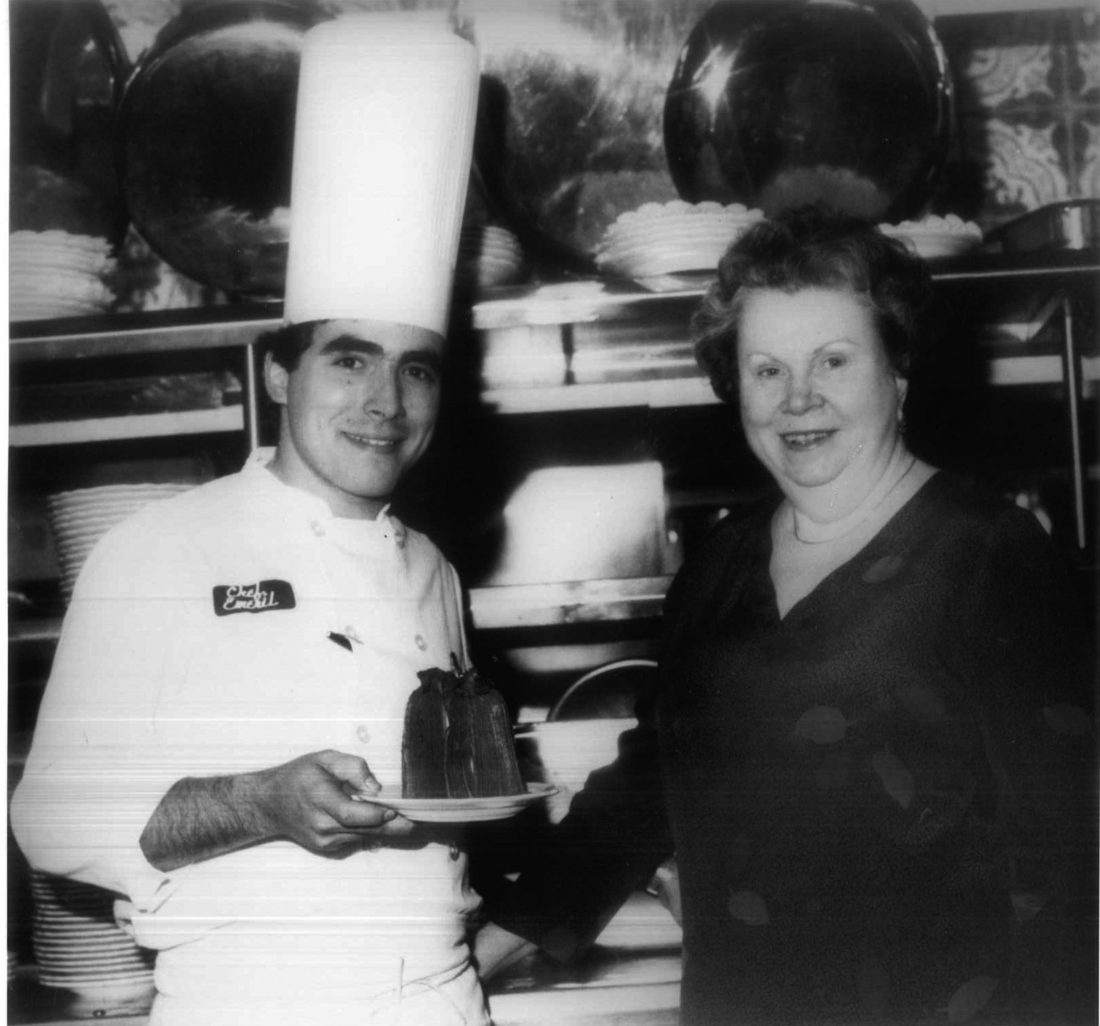
Photo: COURTESY OF the book, MISS ELLA OF COMMANDER’S PALACE
Emeril Lagasse and Ella Brennan at Commander’s Palace.
Ella Brennan laid the cornerstone of modern Southern hospitality. The New Orleans native began expanding her family’s dining empire in the late 1960s, researching recipes, wines, cocktails, and service techniques to create the modern “haute Creole” style that took root at her famous Garden District establishment, Commander’s Palace—one of more than a dozen restaurants the Brennan family came to own. To Brennan, a customer’s dining experience wasn’t limited to what was served on the plates. She strived for an atmosphere that felt like an intimate cocktail party; a place where the cuisine, the service, the décor, and the ambiance all combined to create an unforgettable sense of pizzazz. Brennan’s kitchen turned aspiring chefs, like Emeril Lagasse and Paul Prudhomme, into revered culinary figures. “Ella was the embodiment of a class act, whose vigor, passion and tenacity are unparalleled,” Lagasse wrote in his tribute to Brennan. “She was the grande dame of our business and pioneered our industry, not just in New Orleans but America.”
George H.W. and Barbara Bush
The President and First Lady
June 12, 1924 – November 30, 2018 (GHWB)
June 8, 1925 – April 17, 2018 (BB)

JODY HORTON
When Jenna Bush Hager asked her grandfather in an interview who he hoped to be reunited with after his death, George H.W. Bush was quick to say his wife, Barbara Pierce Bush, who died in April 2018, followed by his first daughter, Robin, who died of leukemia. “I haven’t figured it out if it will be Robin as the three-year-old that she was, this kind of chubby, vivacious child or if she’ll come as a middle-aged woman, an older woman,’ Bush said. “I hope she’s the three-year-old.”
Bush served as the forty-first president of the United States from 1989 until 1993, the culmination of a career that began in 1963, when he was named chairman of the Republican Party of Harris County, Texas, and included terms as the U.S. Ambassador to the United Nations, the director of the CIA, and vice president under Ronald Reagan. Meanwhile, Barbara became the influential matriarch of one of the most dominant political families in American history—which included her sons George W., the forty-third president, and Jeb, once the governor of Florida—and a relentless proponent of literacy. Natives of New England, the Bushes moved to Texas as a young couple in the late 1940s and made the Lone Star State their home—first Odessa, then Houston.
During their seventy-three years of marriage, George and Barbara had six children, seventeen grandchildren, and seven great-grandchildren, and are remembered as a couple who were formidable, faithful, and loving. In an undated letter addressed to Barbara, George wrote, “I have climbed perhaps the highest mountain in the world, but even that cannot hold a candle to being Barbara’s husband.”
Roy Clark
The Showman
April 15, 1933 – November 15, 2018
Country Music Hall of Fame and Grand Ole Opry member Roy Clark brought heart and humor to people all over the world through his music. Born in Meherrin, Virginia, Clark was the oldest of five children, and grew up in a musical household, where he mastered the guitar, banjo, and mandolin. “When I strummed the strings for the first time, something clicked inside me,” Clark said in a 1987 interview with The Tennessean. During a career that spanned seven decades, Clark became a highly respected country music star, with hits like “The Tips of My Fingers” (1963), “Yesterday When I Was Young” (1969), and “Come Live with Me” (1973), and he made history as one of the first country musicians to tour the Soviet Union, though he’s perhaps best known as the co-host, with Buck Owens, of the country music variety show Hee Haw, which debuted in 1969 and aired until 1997. “He was both a showman and a virtuoso,” said Country Music Hall of Fame CEO Kyle Young, “with a love of music that beamed across air waves and into millions of living rooms.”
Mildred Council
The Southern-Cooking Pioneer
April 11, 1929 – May 20, 2018
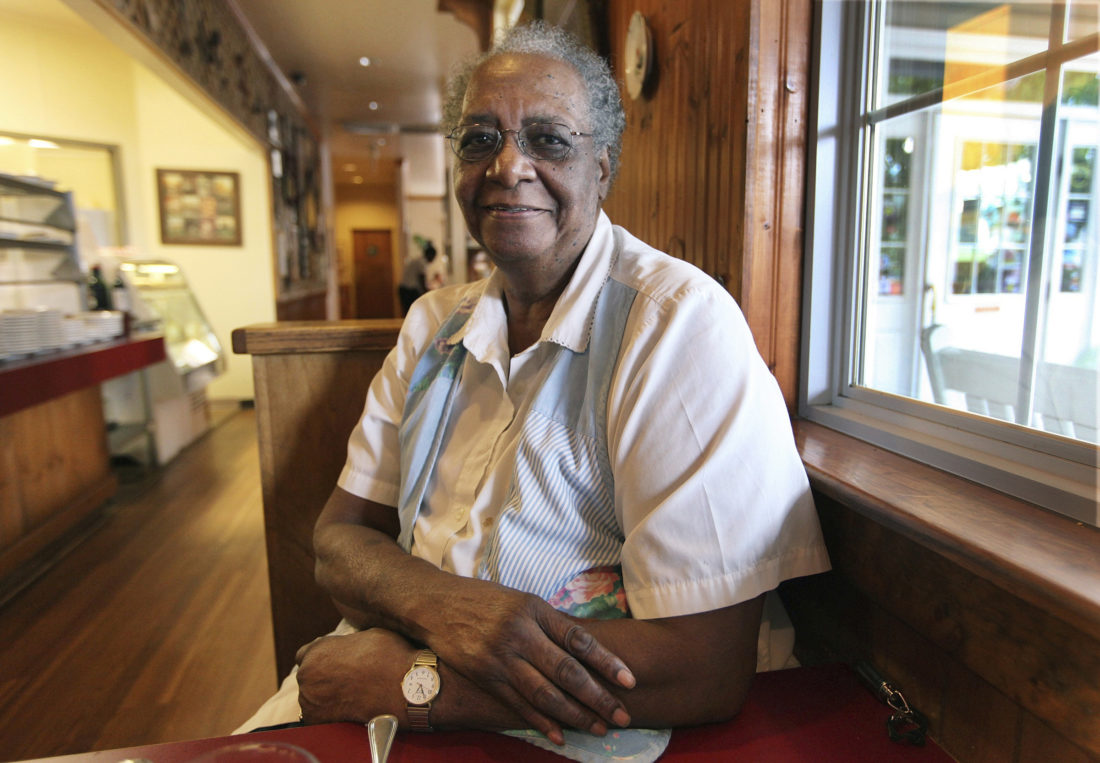
Photo: Chuck Liddy
Mildred Council, known as Mama Dip, poses for a photo at her restaurant in Chapel Hill, North Carolina.
It only took $64 for Mildred Council, better known as Mama Dip, to redefine Southern food. Council opened Mama Dip’s Kitchen in Chapel Hill, North Carolina, early one morning in 1976 with just enough food to cook breakfast for a few passersby. Within hours, Council had made enough money to cover her expenses for lunch and dinner—and the rest is history. Word about Council’s home cooking travelled fast, and soon people from far beyond the Triangle were making pilgrimages to get a taste of her famous fried chicken and warm pecan pie that “came as close to heaven as tall clouds in a blue sky,” as the food writer Kathleen Purvis described in her tribute. Always humble, Council never considered herself a chef, despite recognition from presidents George W. Bush and Barack Obama, multiple national television appearances, and the publication of two highly-acclaimed cookbooks. Instead, she saw herself doing exactly what her father had taught her to do growing up on a farm in Chatham County, North Carolina: Cook Southern food the way it should be.
Frank Fleming
The Wonder Maker
June 17, 1940 – March 18, 2018
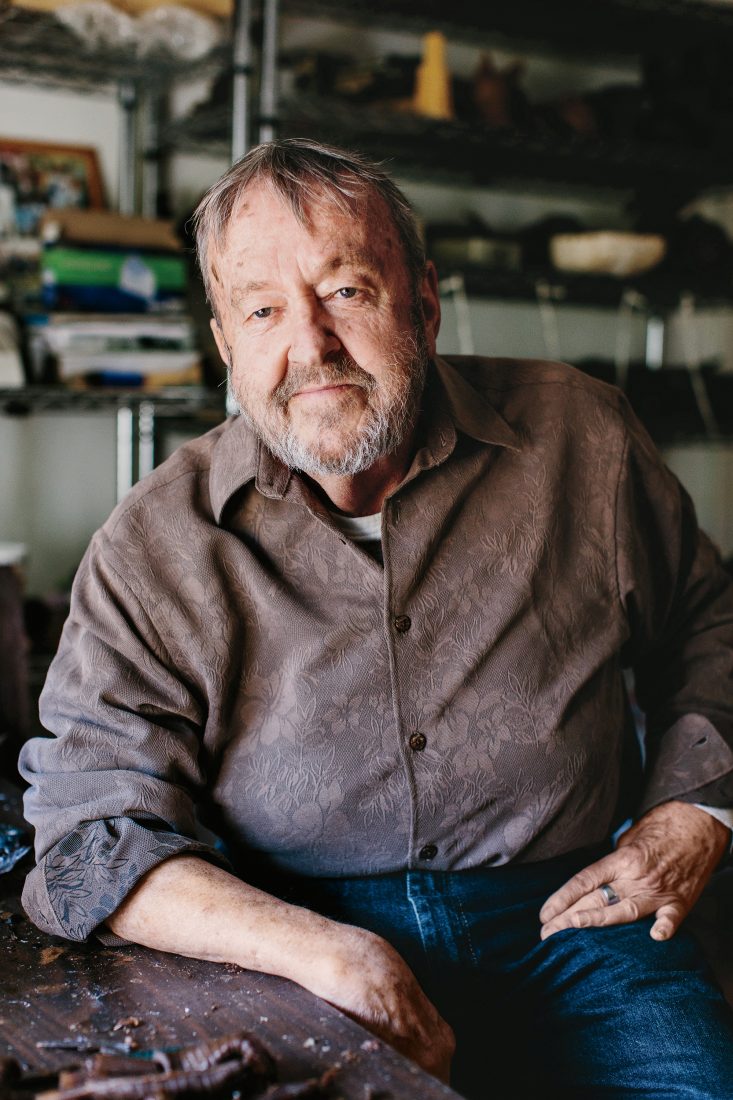
Andrew Thomas Lee
Frank Fleming didn’t speak until he was eight years old. As a child growing up on a farm in Bear Creek, Alabama, the future sculptor had a speech impediment, and often found comfort in the outdoors, where he let his imagination run as wild as the woods. The art he created as an adult blended man and beast, the natural and the totally unnatural. His sculptures, in bisque or bronze, could range from a slender calla lily blossom to a life-sized ram-headed figure reading a book to a gathering of woodland creatures, as featured in The Storyteller, the fountain he created for Birmingham’s Five Points South. In his lifetime, Fleming’s work was featured in more than eighty solo exhibits in galleries and museums, and numerous public and private collections around the world. “I think animals are people who come back,” Fleming told Garden & Gun in a 2014 profile. “I have a recurring dream of me being a bird that soars.”
Aretha Franklin
The Queen of Soul
March 25, 1942 – August 16, 2018

One of modern history’s greatest singers had no formal musical training and learned by ear. But that didn’t stop Aretha Franklin. Not much of anything stopped the Queen of Soul. Though famously associated with Detroit, Franklin was born in Memphis, Tennessee, to a Baptist preacher and a gospel singer. Her natural musical talent and ability to play piano and sing any tune by ear helped her skyrocket to the top of the Billboard charts, and her renditions of “Respect,” “(You Make Me Feel Like) A Natural Woman,” and “Chain of Fools” became not just hits, but cultural touchstones. She sold more than seventy-five million albums and was the first woman inducted into the Rock & Roll Hall of Fame, in 1987. Franklin also performed at the inaugurations of three U.S. presidents: Jimmy Carter, Bill Clinton, and Barack Obama. “Aretha is a gift from God,” said the R&B singer Mary J. Blige in a Rolling Stone article naming Franklin as the greatest singer of all time. “When it comes to expressing yourself through song, there is no one who can touch her. She is the reason why women want to sing.”
Billy Graham
America’s Pastor
November 7, 1918 – February 21, 2018
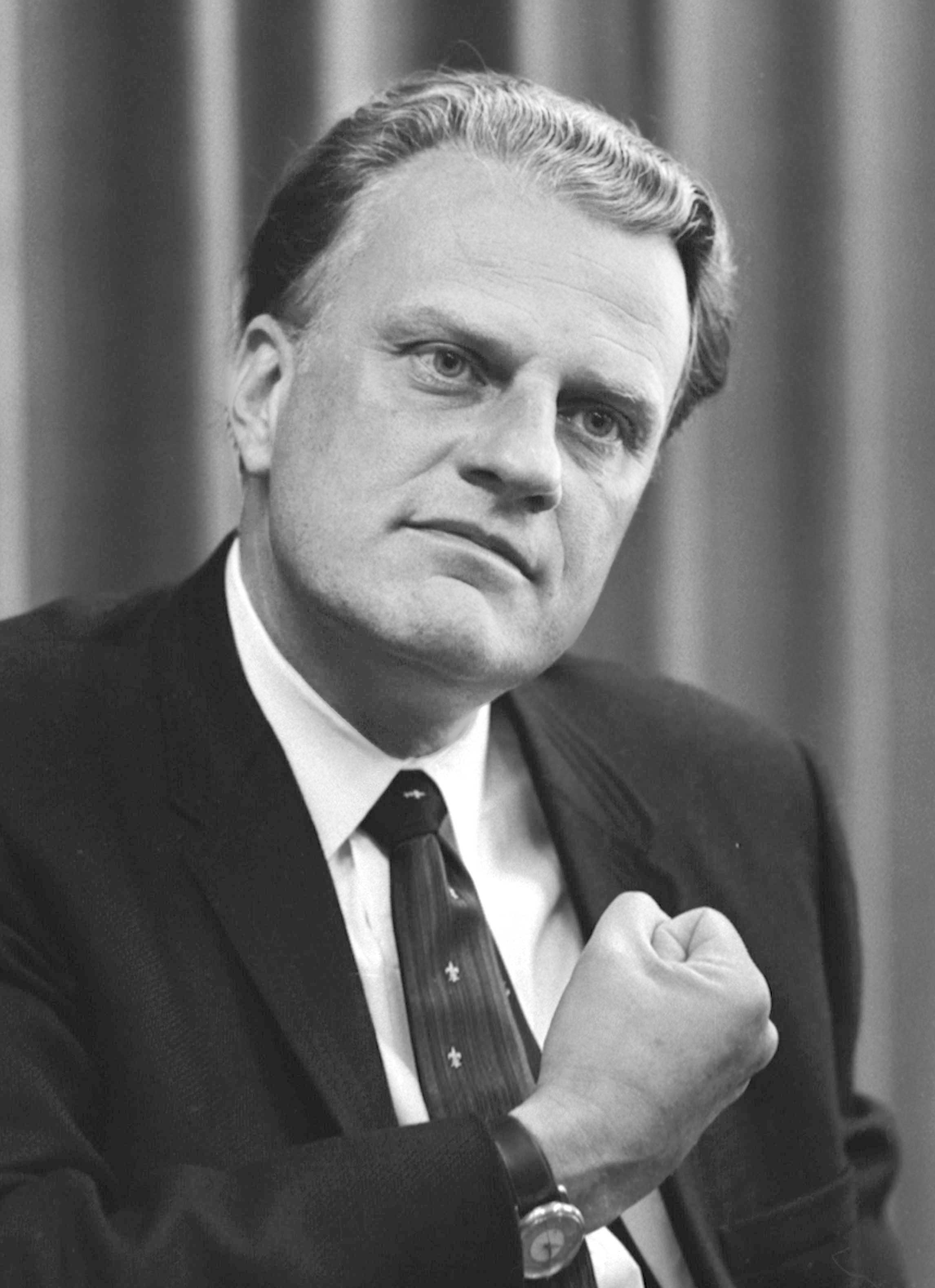
Warren K. Leffler
With his stentorian voice and captivating stage presence, Billy Graham became one of the most influential religious leaders of the twentieth century. An ordained Southern Baptist minister, Graham filled arenas and stadiums on what he called “crusades,” reportedly preaching the gospel to more people in person than anyone in the history of Christianity. Graham’s evangelical fervor took him from his Charlotte, North Carolina, home to points around the globe, and he served as an unofficial chaplain to every U.S. president from Harry Truman to Barack Obama. “When he prays with you in the Oval Office or upstairs in the White House, you feel like he is praying for you, not the president,” Bill Clinton said at the dedication of the Billy Graham Library in Charlotte in 2007. Graham was also a strong proponent of civil rights, opposing racial intolerance on moral and spiritual grounds. “There is no excuse ever for hatred. There is no excuse, ever, for bigotry and intolerance and prejudice,” Graham once said at a crusade. “We are to love as God loves us.”
Rick Hall
The Father of Muscle Shoals Music
January 31, 1932 – January 2, 2018
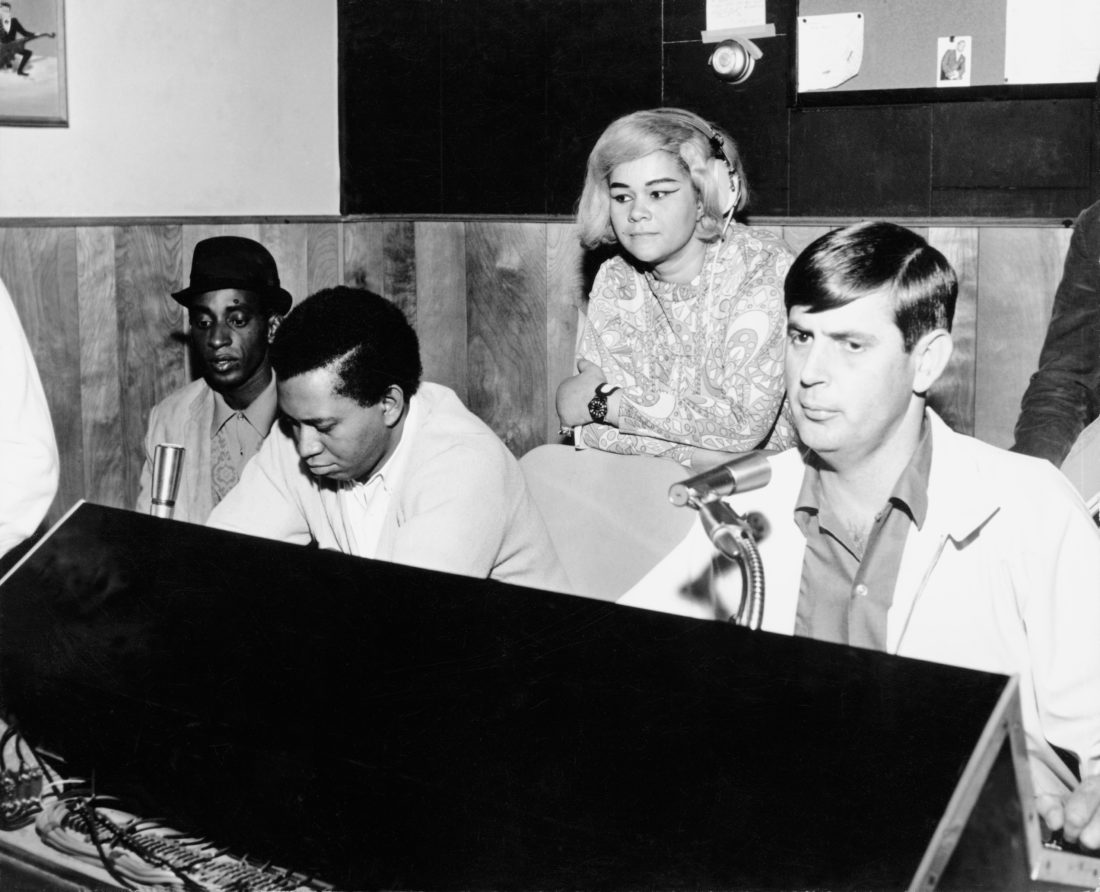
Photo: House Of Fame LLC/Michael Ochs Archive/Getty Images
Rick Hall (right) in the studio with singer Etta James and members of the house band in the late 1960s in Muscle Shoals, Alabama.
When it came to good music, Rick Hall, the architect of the Muscle Shoals Sound, was colorblind. Hall thought nothing of bringing in black and white artists to record together when he founded the Florence Alabama Music Enterprises (FAME) in 1959—just five years after Brown v. Board of Education. In Hall’s eyes, talent was talent, and he helped develop the careers of such musicians as Aretha Franklin, Otis Redding, Duane Allman, and Etta James. In the 1960s and 70s, FAME brewed a potent mixture of R&B, country, rock, gospel, and soul with hits like “When a Man Loves a Woman,” “I Never Loved a Man (the Way I Love You),” “Mustang Sally,” and many more that put his small Alabama hometown on the world’s music map. Singer Dylan LeBlanc, one of Hall’s mentees, recalls the music producer as tough and task-driven—but with results that speak for themselves. “He was a tough son of a bitch,” LeBlanc told G&G. “They don’t make ’em like Rick Hall anymore.”
Keith Jackson
The Voice of College Football
October 18, 1928 – January 12, 2018
With idiosyncratic catchphrases like “Whoa, Nellie!,” and the long, drawn-out “Fum-BULL!” or “Hold the phonnnnne!”, ABC sports commentator Keith Jackson supplied the signature voice of college football for more than five decades. “For generations of fans, Keith was college football,” said Robert A. Iger, the chief executive of the Walt Disney Company, which owns ABC. The color in Jackson’s commentary came courtesy of his upbringing on a farm outside of Carrollton, Georgia. Jackson also lent his voice to ten Summer and Winter Olympics, and he made history as the first American sports commentator to broadcast from the Soviet Union, in 1958. Jackson’s pure love of football made him a revered figure in the sport—he received the National Football Foundation’s Gold Medal Award and was inducted into the Rose Bowl Hall of Fame after he coined the phrase, “The Granddaddy of Them All” in reference to the annual bowl game.
Floyd Miles
The Man Behind the Band
April 13, 1943 – January 25, 2018
A city worker living in Daytona Beach, Florida, with a passion for R&B, the singer, guitarist, and drummer Floyd Miles used music as a way of crossing racial barriers during a time of segregation and racial intolerance. Miles started singing at clubs near the base of the Daytona Beach Pier where his band, The Untils—comprised of Miles, a black man, and several white musicians—would draw crowds. Among them: Gregg and Duane Allman. Miles befriended the brothers and began mentoring them as musicians, eventually touring with them several times. Beyond his relationship with the Allmans, Miles found success with his own albums, like Crazy Man (1992) and Goin’ Back to Daytona (1994). “No one could be more soulful or sing the blues better than Floyd, and he just did it naturally,” Dan Randolph, one of Miles’s promoters in Daytona, said. “It came from his heart. Whatever he felt, he just blasted it out.”
Burt Reynolds
The Southern Charmer
February 11, 1936 – September 6, 2018

ABC Photo Archives/ABC via Getty Images
Burt Reynolds never planned to pursue acting. However, after a car accident left him with a knee injury that cut short his stint as a halfback for the Florida State University Seminoles, he switched from the gridiron to the stage. By the late 1950s, he was booking roles on television shows. The longtime Florida resident was one of the first actors to successfully make the leap from the small screen to the big, and by the mid-seventies, Reynolds’ easy-going masculinity and natural Southern charm had helped make him a top box-office draw in films like Deliverance, The Longest Yard, and Smokey and the Bandit. “[He] made living down here, being a Southerner, something to appreciate and love,” author Ace Atkins wrote in tribute. And as Reynolds himself wrote in his memoir, But Enough About Me: “Nobody had more fun than I did.”
Dovey Johnson Roundtree
The Legal Trailblazer
April 17, 1914 – May 21, 2018
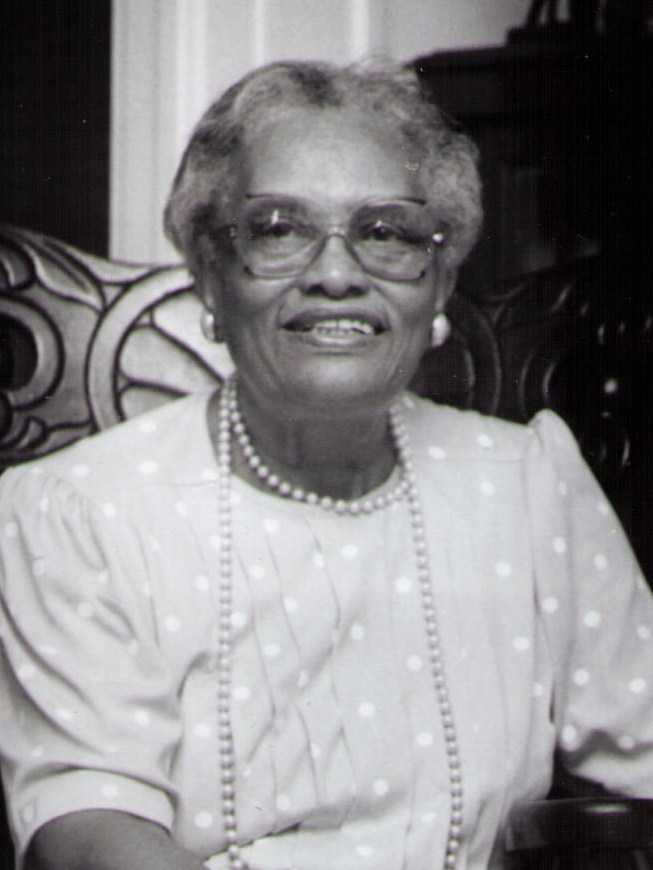
Wikipedia Commons
Dovey Johnson Roundtree broke through countless barriers in her five-decade-long career as a criminal defense lawyer. Roundtree played a critical early role in the desegregation of interstate bus travel when the now-defunct Interstate Commerce Commission ruled in favor of Roundtree’s client, Sarah Keys, in 1955, after she had been arrested for refusing to give up her seat to a white Marine. Throughout her legal career in Washington, D.C., Roundtree defended predominantly poor African-American clients, often accepting homegrown vegetables as payment for her legal advice. Roundtree’s grit and determination led the Charlotte, North Carolina, native to become one of the first women to receive full ministerial status in the African Methodist Episcopal Church, the first African-American nominated for membership in the all-white Women’s Bar Association of the District of Columbia, and a member of the first class of African-American women to be trained as officers in the newly created Women’s Army Auxiliary Corps during World War II.
Tom Wolfe
The Revolutionary Storyteller
March 2, 1930 – May 14, 2018
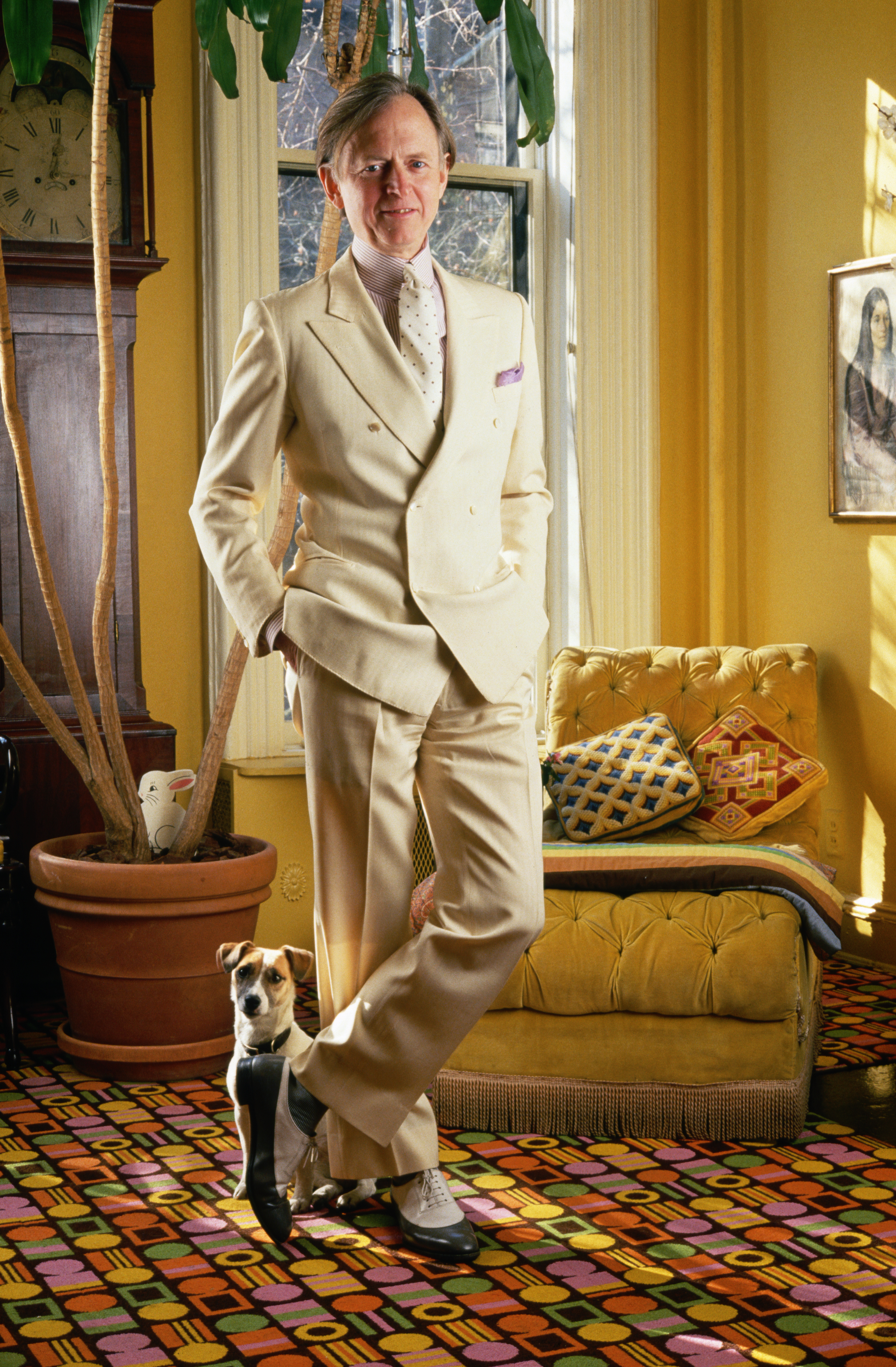
Photo by Roger Ressmeyer/Corbis/VCG via Getty Images
Dressed in his ubiquitous summer-white suit, often with the accoutrements of a monochromatic hat, tie, and shoes, the author and journalist Tom Wolfe was one of the most unconventional (and snazzily dressed) writers of his time. Born and raised in Richmond, Virginia, Wolfe moved up the coast in the 1960s to New York City, where he was credited with spearheading what became known as New Journalism, a then-unorthodox movement that pushed the boundaries of traditional nonfiction writing by incorporating the dramatic techniques of fiction. His particularly distinctive voice, flamboyant syntax, and explosive punctuation also found their way into his best-selling nonfiction books, including The Electric Kool-Aid Acid Test (1968), The Right Stuff (1979), and The Bonfire of the Vanities (1987). “He was in such a world of his own that you could only admire him, and never could dare try to influence him, or be influenced by him,” Gay Talese, his longtime friend, told Rolling Stone.
David Wolkowsky
Mr. Key West
August 25, 1919 – September 23, 2018
When real-estate developer David Wolkowsky returned to his hometown of Key West in 1962 after years spent restoring properties in Philadelphia, he saw nothing but potential. Soon after, Wolkowsky began a revival project for Key West’s historic Old Town, which had suffered natural disasters, like Hurricane Donna in 1960. In addition to his restoration work, Wolkowsky also helped elevate the island by befriending such prominent literary figures as Truman Capote and Gore Vidal, and encouraging them to soak up the southernmost island’s sun. He opened the Pier House Hotel in 1968, and Jimmy Buffett played some of his first gigs in the hotel’s bar. Bob Marley, too. “David began to renovate those buildings and really, I think, was one of the main people responsible for the historical preservation movement,” said Key West historian Arlo Haskell, “and for showing people that Key West’s past, its history, was worth saving, had a certain glamour to it, was beautiful.”







